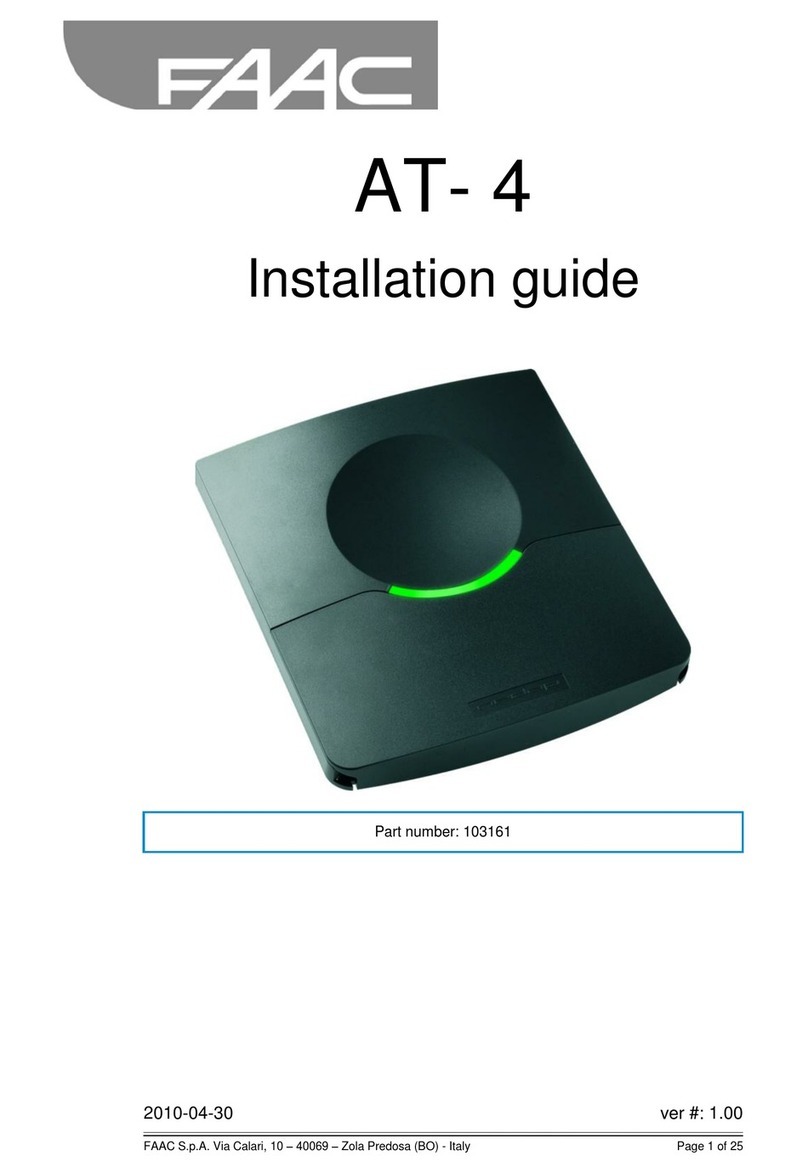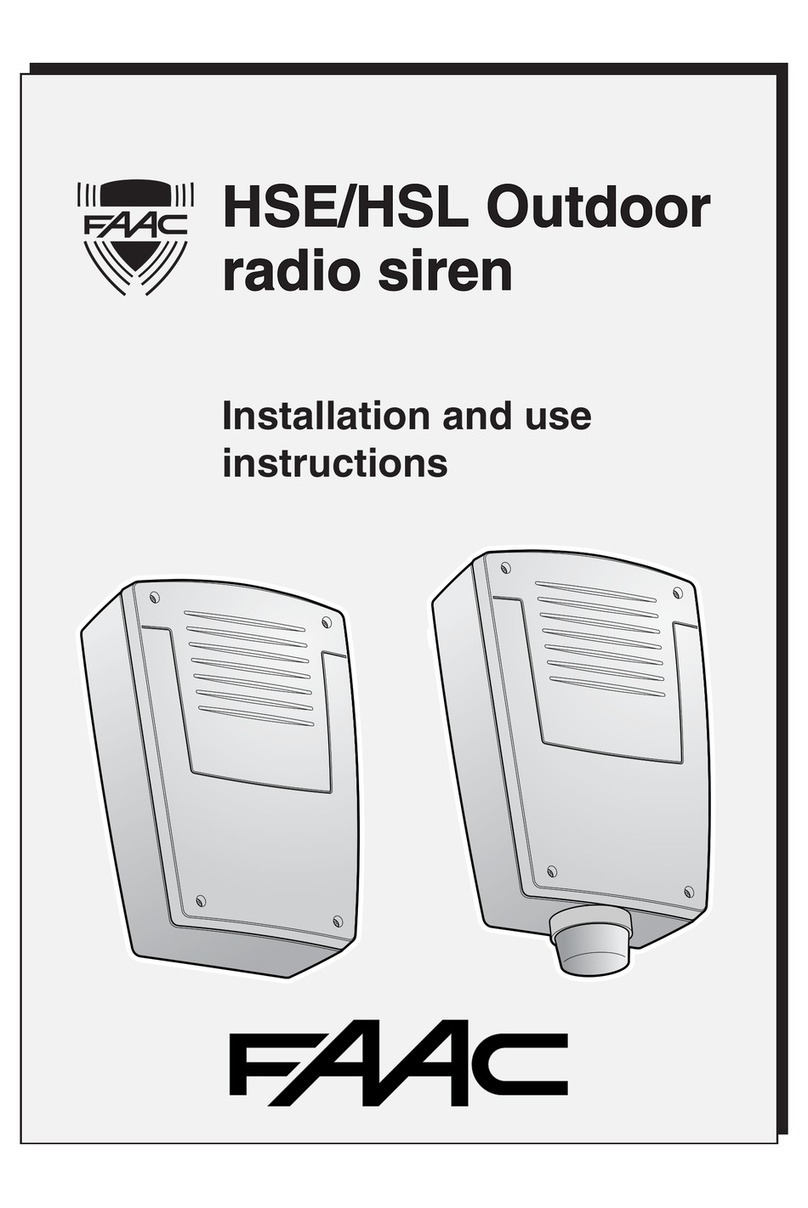6
Operation of the HOME SHIELD alarm system
The radio transmission used by this system, is
performed on two different frequencies. The messages
emitted by the detectors, the control unit and the
sirens, are sent on two frequencies simultaneously:
434 MHz and 868 MHz.
Thanks to the two different propagation modes, the
information sent by the sensors will reach the control
unit, irrespective of environmental conditions and any
attempts to disturb one of the frequencies.
The radio range of each of the system’s devices varies
from 200 to 300 meters in free field.
Self-protection
All devices are protected against sabotage attempts:
- for detectors: protection against untimely opening of
the enclosure,
- for keypads, control unit, and external siren: protection
against opening and untimely detachment.
If one of the devices is opened or detached, a
message is sent to the control unit: the control unit
enables the indoor siren, the outdoor siren and the
telephone transmitter.
The self-protection facility is permanently active, even
if the alarm is OFF. To open the devices without
tripping the alarm, the control unit must be in
MAINTENANCE PROGRAM mode.
Supervision
The devices are permanently supervised to ensure
optimal operation: each device regularly sends a radio
message to the control unit, to confirm its operational
status to the control unit.
When the control unit no longer receives any message
from one of the system’s devices, it trips a
“supervision” fault message. The control unit provides
information on the problem, at enablement or
disabling, via the keypad or remote-control.
The supervision function can be disabled.
The language used by the devices to communicate is
a radio protocol. It guarantees protected digital
transmission, and makes the system compatible with
all devices using this protocol.
To eliminate the risks of fraudulent use by reproducing
the radio code, every alarm ON or OFF command
uses an encrypted message which differs every time.
The security of the messages sent by the devices of
this system, is guaranteed by a single code assigned
when each of the devices was being produced (more
than one million possibilities).
The system’s surveillance
Transmission by double
band radio
Import
Important:
ant:
- when radio waves travel through walls, they lose a
varying degree of power, according to the materials
used,
- care is necessary, especially when the waves cross
through thick walls in reinforced concrete or metal
structures.
- in the latter case, the radio range may be reduced to
a few dozen meters inside the house.
Presentation





























